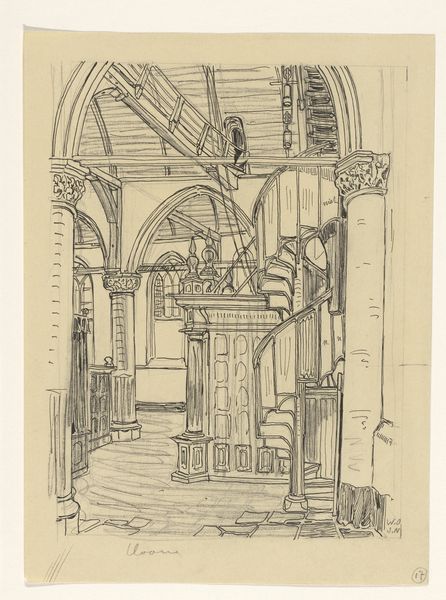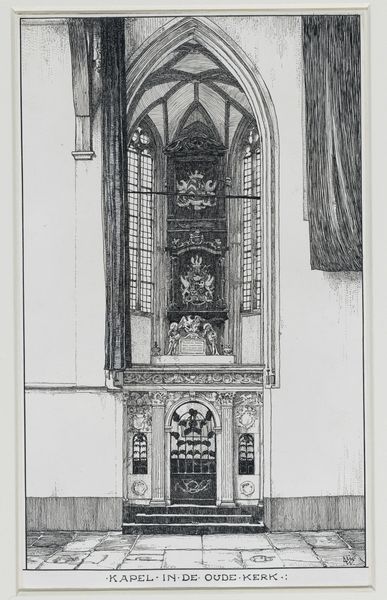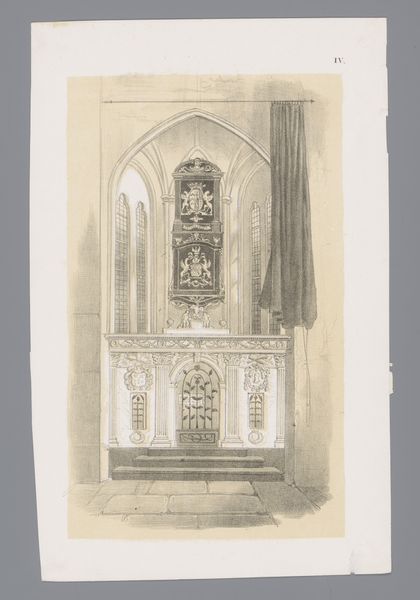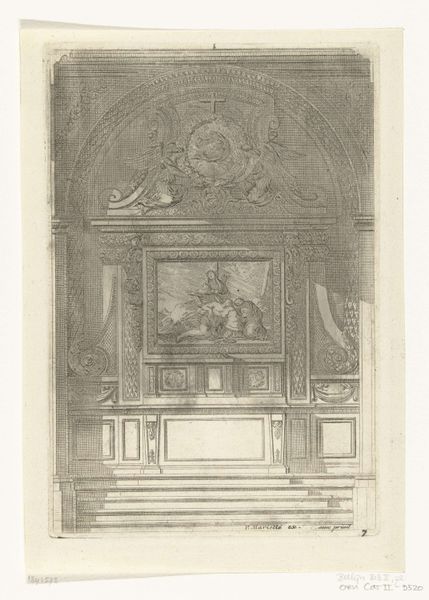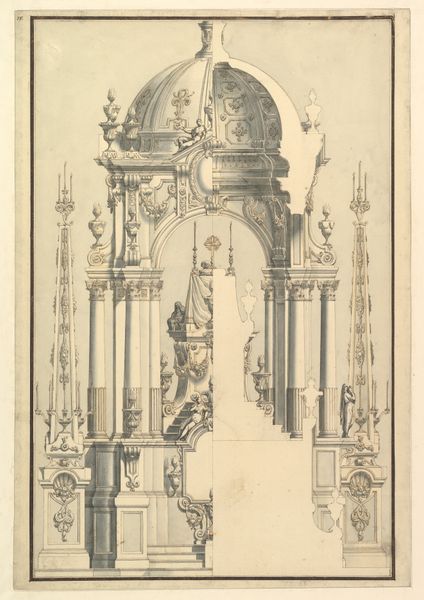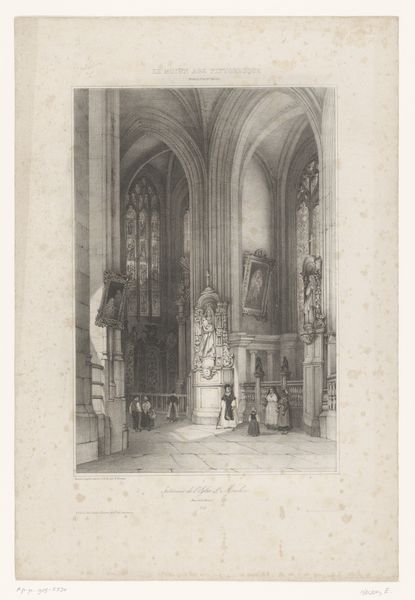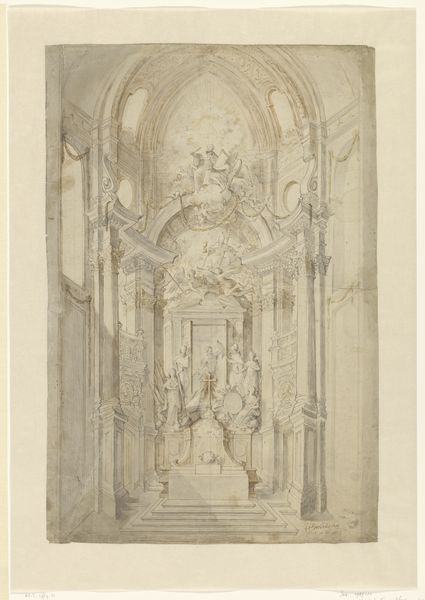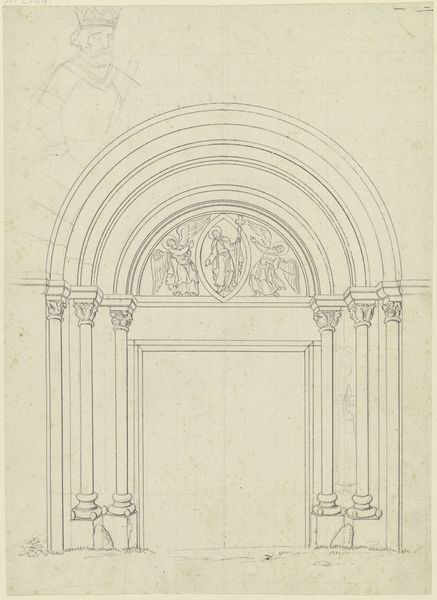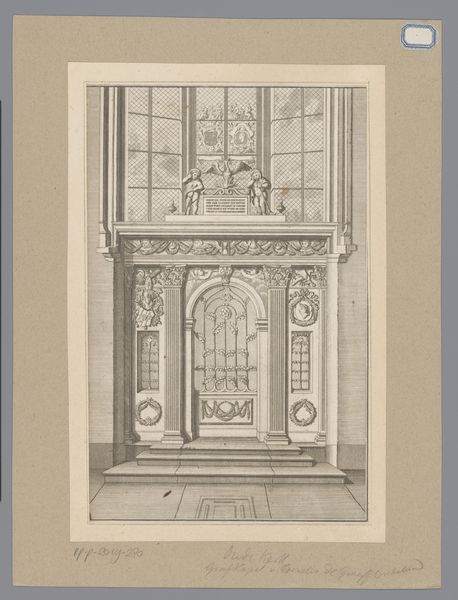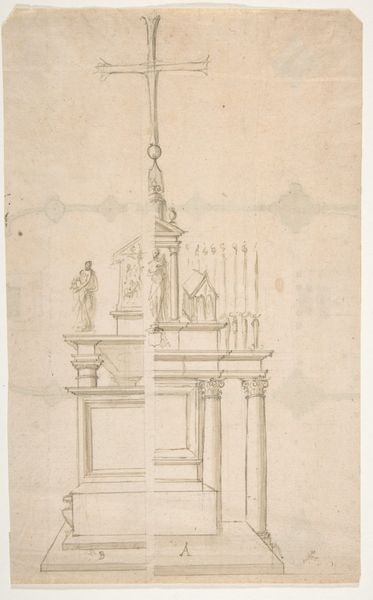
drawing, print, engraving, architecture
#
drawing
#
neoclacissism
# print
#
old engraving style
#
geometric
#
line
#
history-painting
#
engraving
#
architecture
#
realism
Dimensions: height 215 mm, width 137 mm
Copyright: Rijks Museum: Open Domain
Editor: This print from 1843 by Jean Théodore Joseph Linnig depicts "Grafkapel van Peter Paul Rubens," the tomb chapel of Peter Paul Rubens. It is quite detailed with precise line work. What strikes me most is the contrast between the ornate altar and the stark architectural lines of the chapel. How do you see the materiality informing the work? Curator: The etching beautifully highlights the contrast in materials – the smooth stone surfaces against the highly decorated altar piece. Linnig gives careful attention to the labor involved in the extraction and preparation of the building stone as a precious, limited commodity. Consider the means of production involved in both. What statements can we make about power and legacy through the art making of tombs and the printed reproduction and distribution of images of tombs? Editor: That's interesting! I hadn't considered the print as a medium, further democratizing access to such monuments. So, are you saying the print serves as a tool, not just for documentation, but for a wider cultural dialogue? Curator: Precisely! The materiality of print – its reproducibility, its relative affordability – creates new possibilities for broader audiences to "access" art otherwise reserved for the elite. Its circulation challenges the notions of the ‘original’ or ‘unique’ artwork, raising important questions about art as a commodity and social marker. The creation of such devotional art underscores how intertwined artistic skill was with material wealth and its visual and artistic expressions. Editor: It’s fascinating how looking at materials opens up discussions about social structures and access to art. I appreciate you framing this print within a wider material context. Curator: My pleasure. Thinking about art through the lens of materials opens our eyes to previously invisible layers of meaning, wouldn’t you agree?
Comments
No comments
Be the first to comment and join the conversation on the ultimate creative platform.
